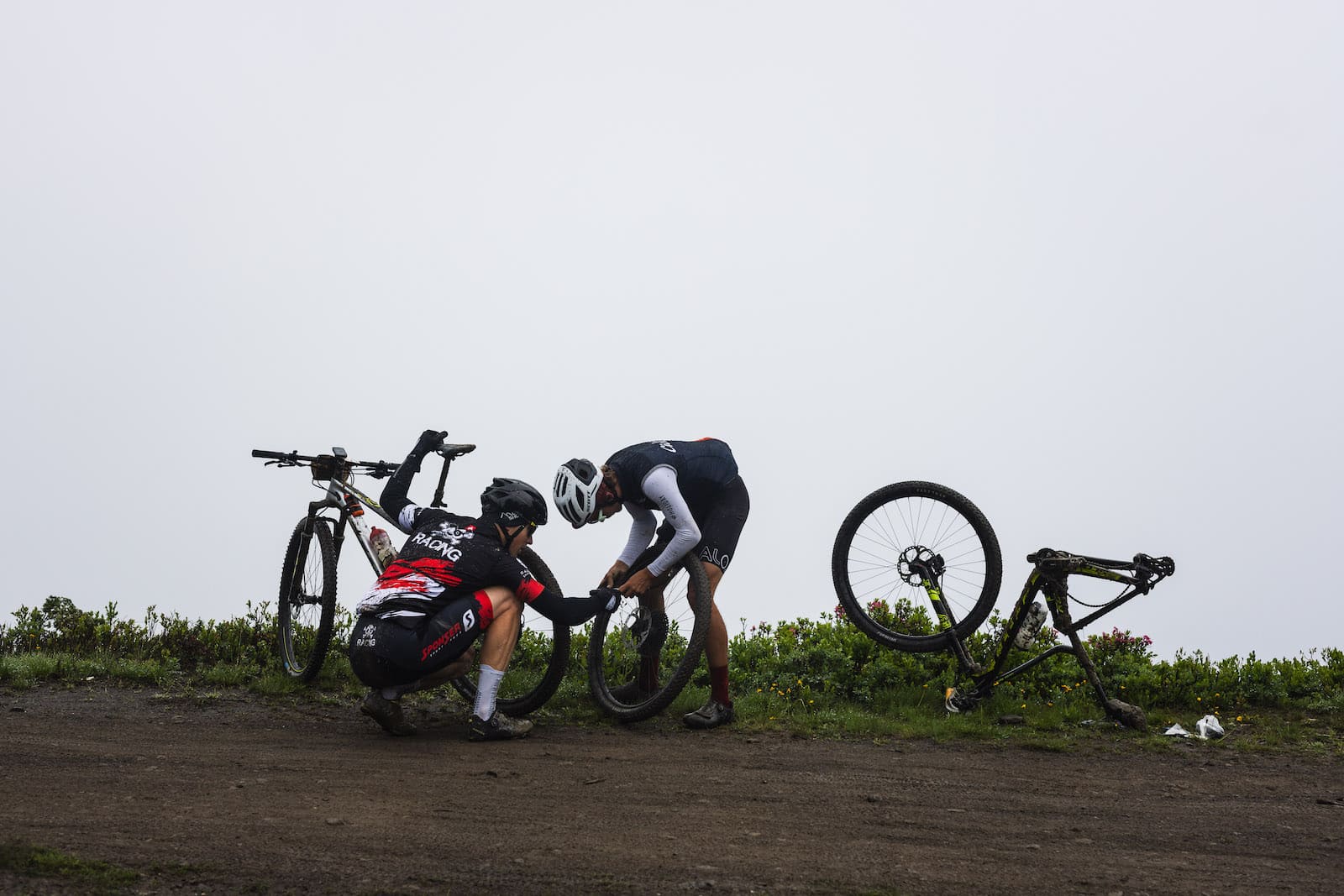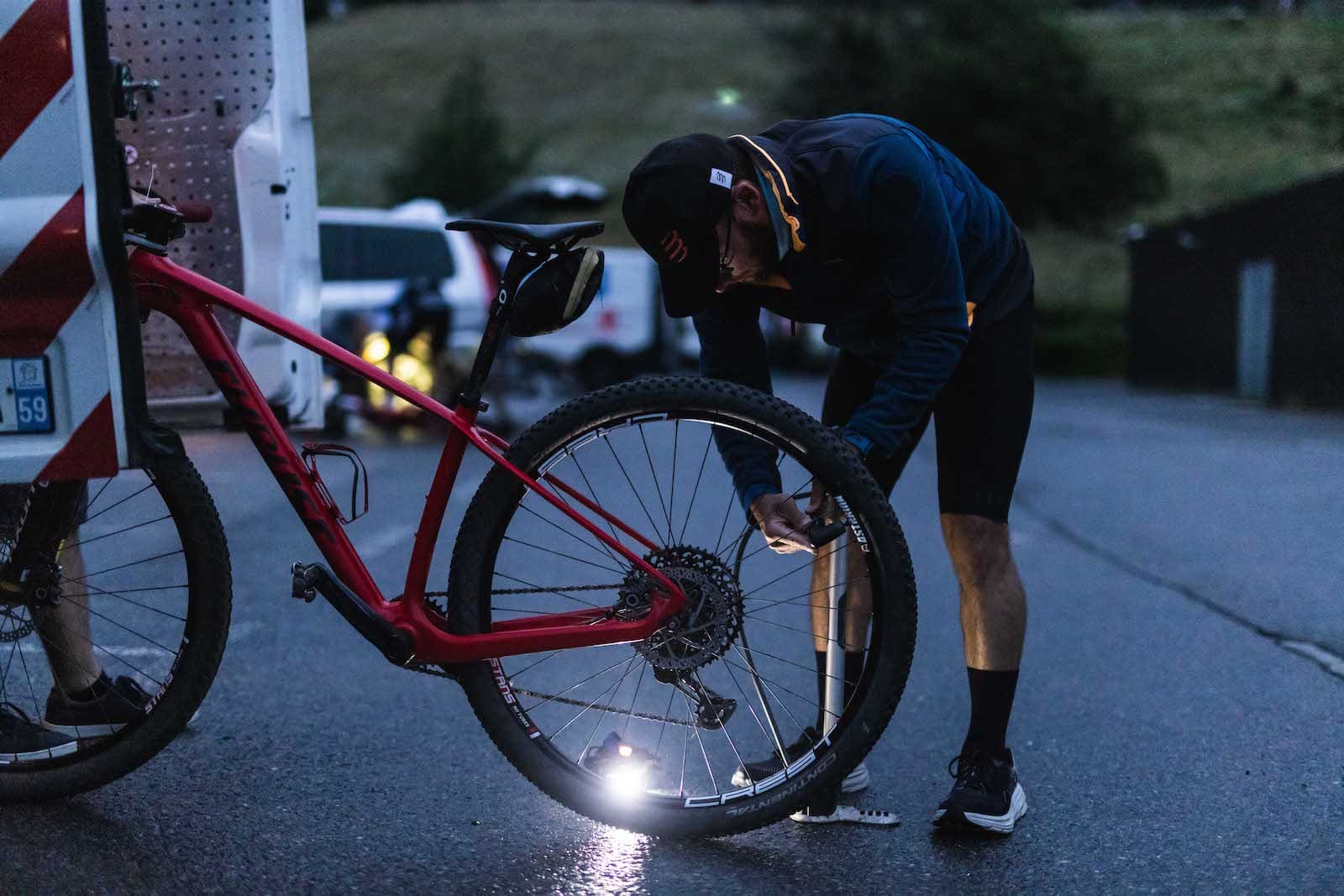June 28 to 30, 2024
Pre-race equipment preparation is essential to anticipate mechanical problems. After days, weeks and months of preparation and training to exceed your limits, you don’t want everything to be ruined by a mechanical problem that could have been avoided. A badly adjusted derailleur, incorrectly bled brakes or the omission of an essential tool such as a pump or inner tube can bring your effort to a premature halt at a time when your legs were on fire. Arthur Lehec, member of the MB Race team and technician at Scott Sports France, gives you his advice. !
A complete overhaul of the bike is necessary for this type of race. You’ll be giving it your best shot, and your equipment will be put to the test for a whole day, sometimes in difficult conditions.
A 10-minute check-up provides a quick diagnosis:
If you don’t feel up to it, ask your dealer to do it for you. Don’t take the plunge with an untested bike.
Apart from the obligatory helmet, you mustn’t neglect the accessories that will enable you to race in the best possible conditions. THE QUESTION: Bagged or bagless?
WITHOUT A BAG: like the top riders at the front, if your aim is to go as fast as possible without compromising and therefore accepting risks. Risk of being cold, hot, having nothing to repair and lacking autonomy in food and water.
Of course, it’s more comfortable to ride without a bag. In this case, it’s a real plus to have the assistance of those around you, as often as the route allows.
WITH BAG: the bag allows you to be as self-sufficient as possible and give yourself every chance of finishing. It must be comfortable (we leave between 9 and 16 h) and must contain :

Since I’ve been doing this type of long-distance mountain or high-mountain running, the compulsory equipment has made me add a set of sterile compresses and straps to my bag. I’ve never used a first-aid kit before, so I’m not sure I have the best advice for that. But the survival blanket is the minimum you need for yourself or to cover an injured person during a race in the event of heatwave or cold/rain/snow.
The essential tools to carry with you are :
As far as suspension is concerned, some people tend to ride very inflated in more rolling areas to get better XC performance. In this case, the setting must be adjusted downwards to make full use of the travel on the MB Race’s technical descents. Approx. 20-30% lowering of the suspension under your weight, statically.
The rebound must be set fairly quickly, as some high-speed descents are made up of a succession of roots or stones. The suspensions must have time to absorb the impact and relax to absorb the next shock. Bounce too slowly: the suspension will remain depressed at the first impact and the rest will be absorbed by your arms and legs. > FATIGUE AND HEADACHES!
SHOULD YOU ADJUST YOUR BIKE IN THE SAME WAY DEPENDING ON THE DISTANCE AND DIFFICULTY OF THE RACE?
The MB Race ranges from 20 to 140km, so equipment preparation is different, but in all cases the bike must be in PERFECT WORKING CONDITION to avoid accidents and enjoy the scenery without getting your hands dirty. Lubrication is different if conditions are going to be complicated. There are lubricants for both dry and wet conditions, for example in the Shimano range.
Of course, the longer the chosen distance, the longer the preparation, and the harder the disappointment of having to stop due to a mechanical problem caused by poor equipment preparation. An incident at the 15th km of a 20km race or at the 15th km of a 140km race doesn’t have the same flavour.

PuncturesToday, however, it has been greatly reduced by effective preventive liquids, and in some cases can be repaired with a wick in a matter of seconds.
SOLUTION: wait a few seconds while driving for the preventive to take effect.
The fall that twists the derailleur hanger.
SOLUTION: dismantle the derailleur and replace the hanger. If the derailleur is bent, even with a new dropout, it’s affected too. Twist it GENUINELY to finish the race. In any case, it will have to be replaced at the end of the race.
Chain breakage may be due to :
SOLUTION: visualize the affected area. Derive the chain to extract the HS link sequence to find 2 males (quick-release) or 1 male and 1 female (Shimano quick-release).
A branch in the aisle, break aisle(s).
SOLUTION :
A speed or brake hose severed by a flying stone.
SOLUTION :
Keep up to date with the latest race news,
subscribe to the newsletter!

Come and experience your MB Race, the challenge of a lifetime!
© MB Race 2023 -Webdesign by avicom’